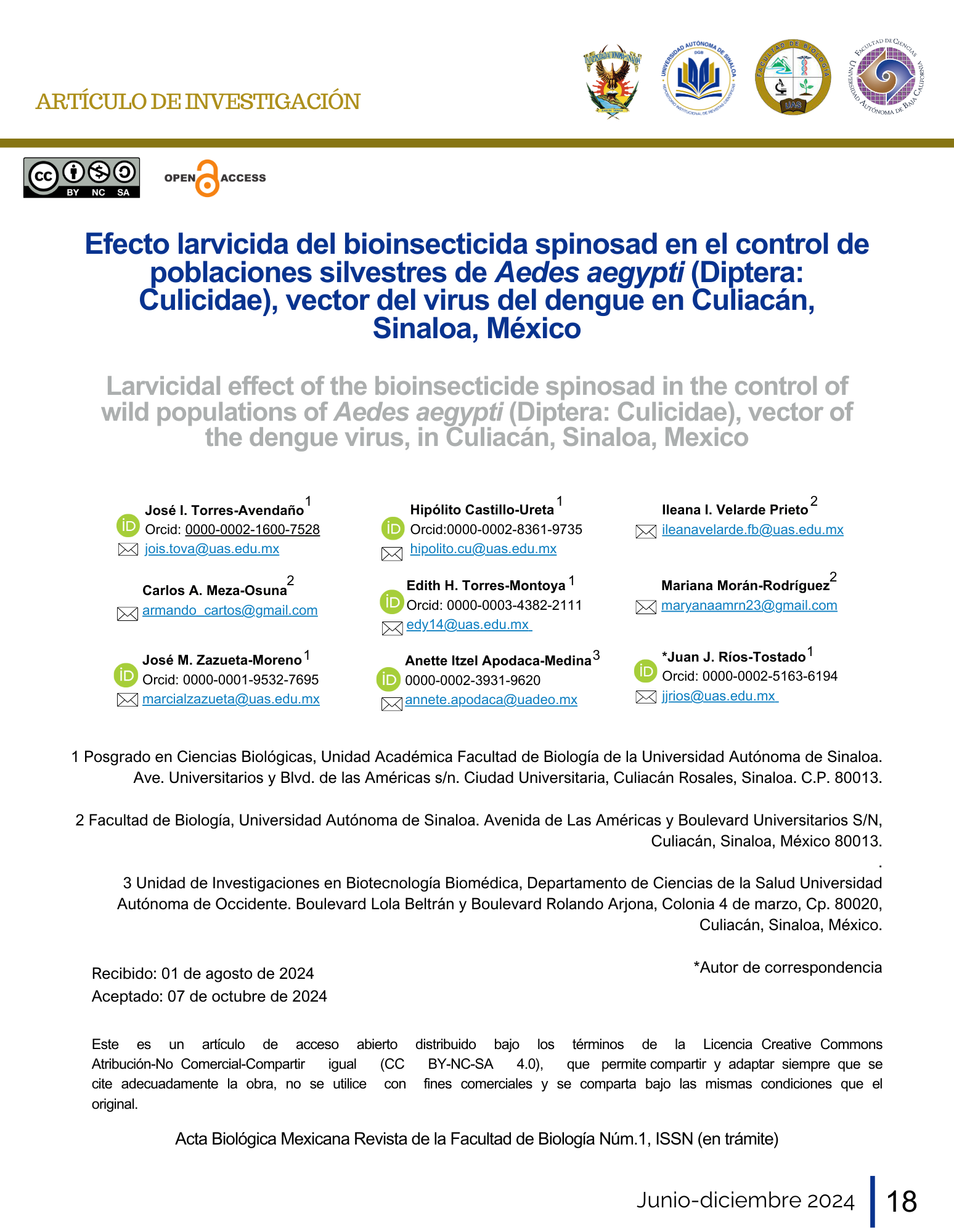Larvicidal effect of the bioinsecticide spinosad in the control of wild populations of Aedes aegypti (Diptera: Culicidae), vector of the dengue virus, in Culiacán, Sinaloa, Mexico
Keywords:
Dengue, larvicide, spinosad, Aedes aegypti, Culiacán RosalesAbstract
Dengue, caused by the dengue virus (DENV) and primarily transmitted by Aedes aegypti, significantly impacts Mexico, with Sinaloa being one of the most affected states. The use of chemical insecticides has led to resistance in Ae. aegypti in several regions of Mexico, including Sinaloa. Spinosad emerges as a promising alternative: it is environmentally safe, has low toxicity to mammals, and does not exhibit cross-resistance with other larvicides. The larvicidal effect of spinosad was evaluated on Ae. aegypti populations collected from the cemeteries La Lima, Loma de Rodriguera, San Juan, Civil, 21 de Marzo, and Aguaruto in Culiacán, Sinaloa. Twenty specimens per collection site were exposed to concentrations of 2, 4, and 6 mg/L. Larval mortality was recorded after 24 hours. Mortality rates ranged from 10.33 ± 5.33 to 18.78 ± 1.71, with the lowest toxicity observed in populations from the La Lima and Loma de Rodriguera cemeteries (Kruskal-Wallis, P = 0.00). The LC50 was established at 1.88 ± 0.90 mg/L, showing greater larvicidal sensitivity in the San Juan, Civil, 21 de marzo, and Aguaruto cemeteries (Student's T-test, P = 0.01) located in the west, east, and center of the city. Spinosad is an effective option for reducing the populations of the dengue-transmitting mosquito in the city and, consequently, the cases of the disease. However, it is crucial to adjust spinosad concentrations based on geographic location to ensure proper application, thereby minimizing economic, environmental, and public health costs.
Downloads

Downloads
Published
Issue
Section
License
Copyright (c) 2024 Acta Biológica Mexicana

This work is licensed under a Creative Commons Attribution-NoDerivatives 4.0 International License.

